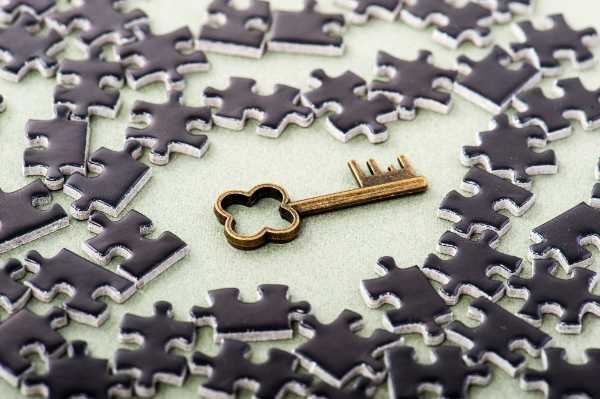
How Much Does It Cost to Start an Escape Room? A Comprehensive Breakdown
Imagine being trapped in a dark room where a cryptic note hints at how to unveil a hidden exit. The clock ticks ominously, and you have only 60 minutes to escape, causing your heart to pound with a thrilling mix of panic and excitement.
Welcome to the world of escape rooms, the immersive puzzle playgrounds that have exploded in popularity in recent years.
As of 2022, there are more than 1,900 escape room establishments in the US alone, many of them generating profit margins over 50% on top of substantial revenues. It’s a booming industry that is still growing with the potential for staggering profits.
With that being said, if you are planning to start your own escape room business in 2024, it’s definitely a great time to enter this lucrative industry. Yet, before you embark on this profitable adventure, you might want to address this main question
How much does it cost to start your own escape room business?

In this guide, we will answer this question and reveal the intricacies of escape room startup costs, breaking down the different aspects to help you navigate starting the business from concept to thriving enterprise. We will reveal the hidden costs and explore the possibility of potential savings so you can maximize the potential ROI of your escape room business.
Without further ado, let us begin this guide right away.
Escape Room Business: Cost Breakdown
While starting an escape room business can be a lucrative and rewarding venture, it’s important to be aware of both the upfront and recurring costs involved before you dive in.
First, let us discuss the upfront costs that will be the foundation of your escape room business’s success.
1. Upfront Cost
Rent and Renovations
For an escape room business, the choice of location can literally make or break its chance for success.
Obviously, the cost of renting and renovating a property will vary depending on various factors: location, size, the extent of renovations, etc. Nevertheless, they will be a substantial—and often the biggest—part of your overall budget.
Location, location, location
If you are planning to start your escape room business on a busy downtown street in Toronto or New York City, the rent can be as high as $10,000-$20,000 per month, if not more. Yet, if you are planning to rent an affordable space in Montreal, the rent may be much more affordable, closer to $5,000- $8,000 per month.
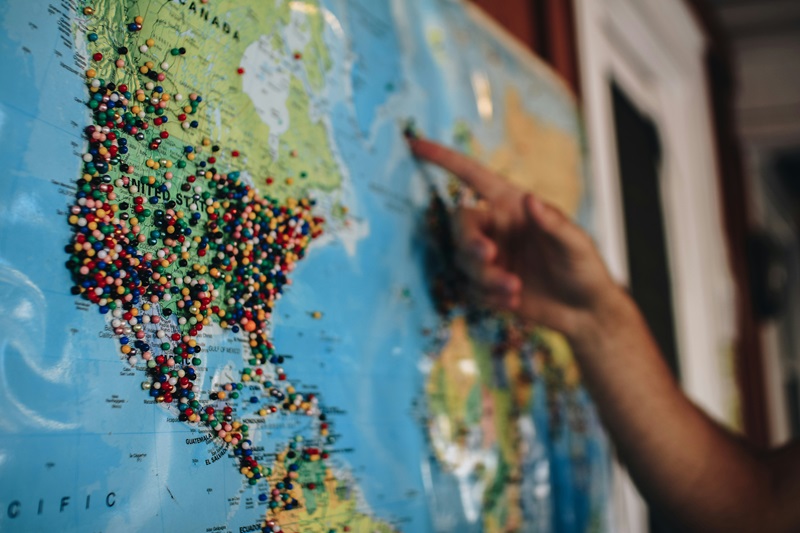
Yet, the better the location and the higher the foot traffic, the easier it will be to attract customers, so the higher rent may be worth it.
Property size
The size of the property will directly impact your rent. A one-room space in a not-very-busy area could start around $2,0000 to $3,000/month, but larger spaces in the same area can reach more than $10,000 per month,
Renovation
Due to the nature of the business, renovation will be a major expense in an escape room business. Be ready to invest in:
- Design: You may need to hire professional set designers to help you create realistic and challenging escape rooms. Expect to spend $5,000-$15,000 or more for a professional escape room design.
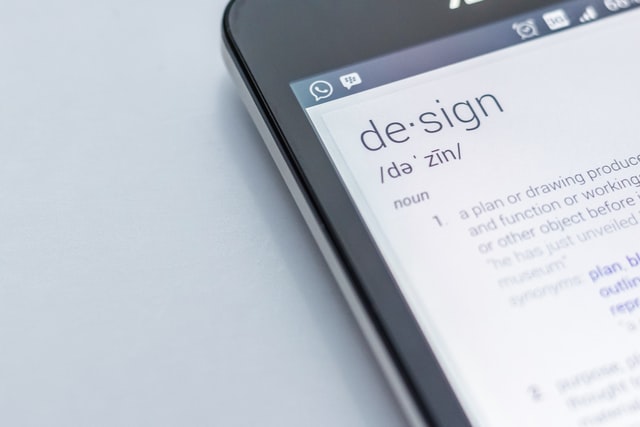
- Labor: Depending on the complexity of your theme and design, you might need a team of skilled builders to build your vision. Think budgets in the range between $10,000-$30,000, and expect to spend more for complex work.
The key to success here is to find the right balance between location, property size, and renovation costs to maximize your ROI. A smaller space in a strategic location with a modest renovation can be just as, if not more, profitable than a large space in a downtown area where you may need to spend more on promotions.
Theme and Design
Let’s break down the cost of the various elements involved in designing an immersive escape room experience:
- Set design
You’ll need to build the physical structure of your escape room and invest in thematic decoration, both will cost skilled labor and materials. Costs may vary based on the intricacy of the chosen theme and size of the building but expect to spend anywhere between $5,000-$20,000 (or more) for a well-designed set.
- Props
The cost of props would depend on the level of detail and material quality, which can vary greatly. There’s the possibility of using thrift store finds and salvaged materials (under $1,000 or even under $500), and there’s also the option of using high-tech and custom-made props that can cost you more than $1,000 per piece. Tailoring props to fit your room’s specific theme may incur additional costs, but can be worth it to add to the overall immersion.
- Puzzles
Puzzles are the heart and soul of any escape room, and the selection of these puzzles can significantly affect overall costs. Complex puzzles or those using advanced technology may incur higher upfront costs. Be prepared to spend anywhere between $2,000 and $10,000 for a set of professionally designed puzzles depending on their originality, complexity, and use of technology.
- Technology
You’ll need to invest in audio-visual equipment, from automated lighting, sound effects technology, hidden camera monitoring players, and other pieces of equipment. Costs may vary depending on the size of the rooms, the technology used, and the complexity.
Simple A/V systems and basic lighting can be found for under $1,000, but intricate interactive systems (I.e., sensors with automated puzzle components), cutting-edge VR, and other technologies can push the budget towards $5,000 or more.
Remember that you don’t always need to go all-out with the latest or the most advanced technology. Creativity is key, and uniquely designed puzzles can often outshine expensive gadgets. Finding the right balance is key to success.
Permits and Licenses
Before you can start operating the escape room business and making it available to the public, you’ll need to navigate the legality of permits and licenses:
- Business license: Every escape room needs a basic business license to operate legally. Costs typically range from $50-$200 per year, depending on your city or state.
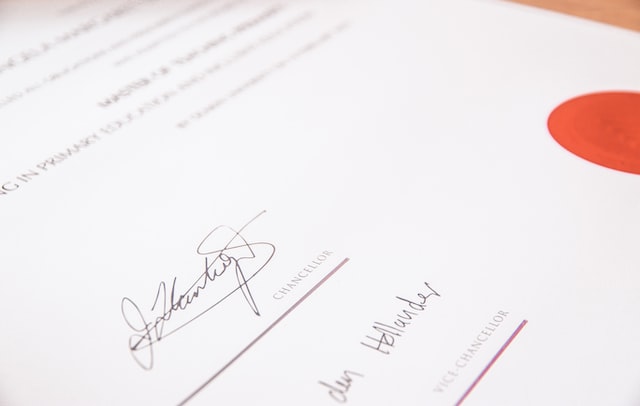
- Tax registration: Expect minimal fees or online registration at no cost when registering for state and federal taxes.
- Zoning permits: Depending on your chosen location’s zoning regulations, you might need specific permits for running an entertainment business. Cost can vary between $100 and $500, potentially higher for complex applications.
- Fire safety permits: Obtaining fire safety inspections and permits—including fire alarm and sprinkler system certifications—is crucial. Expect fees in the range of $100-$300, with additional costs for equipment upgrades if needed.
- Building permits: Building permits are mandatory for any major renovations or structural changes (which are common in building escape rooms.) The cost of building permits will vary depending on the scope of the renovation and can potentially reach more than $1,000 for extensive renovation work.
Optional:
-
- Alcohol permits: If you plan to serve alcohol, you may need separate permits and licensing, which may incur substantial costs depending on local regulations.
- Music licensing: You’ll need proper licensing (i.e., from ASCAP or BMI) if you decide to play music in your escape room. Fees can vary.
- Insurance: It’s vital to protect your escape room business with liability insurance.

It’s important to research your chosen location’s specific regulations early on to avoid hefty penalties later. Consult with a lawyer or a local business advisor if necessary, which can help you save time and money.
Marketing and Branding
Effectively marketing your escape room business while establishing a strong brand identity is critical for attracting customers and growing your business. Below, we’ll discuss the different expenses associated with offline and online marketing channels.
- Website development: A professional website showcasing your escape rooms and customer testimonials is crucial. Ideally, you should integrate an online 24/7 booking functionality to ensure convenience. Expect to invest $500-$2,000 or more for professional website design, but today, there are various DIY website builder options (Squarespace, Wix, etc.) for budget-friendly options.
- Graphic design: Professional design for creating visual assets (logos, social media/website graphics, flyers, banners, etc.) can cost $500-$1,000 per project. There are DIY options (i.e., with Canva,) but investment in professional design can significantly enhance your brand.

- Digital advertising: Platforms like Google Ads, Facebook Ads, or other social media advertising options offer fast and targeted reach. Budgets can vary widely depending on duration, campaign goals, and reach.
- Offline marketing: Local print ads, flyers in cafes or entertainment venues, and partnerships with other businesses can be effective, but costs will depend on specific choices and reach.
Allocating a clear budget for branding and marketing is crucial for attracting customers and establishing your brand identity. Ideal costs can vary, but a reasonable estimate is between $ 5,000 and $15,000 for the initial marketing initiative.
Software and Equipment
You’ll need to invest in both hardware and software to ensure efficient operations and management of bookings, staff, schedules, and payments.
- Computers: Invest in reliable computers, servers, and possibly booking terminals. They should cost between $500 and $1,000 per computer.
- Printers and receipt paper: You may need to print receipts and tickets for smoother consumer interaction and professional touch. Printers cost around $100-$500 per unit, and you should also factor in ongoing paper expenses.
- Appointment-taking software: In today’s digital age, you’ll want to enable 24/7 online booking so your escape room players can book your rooms at their convenience. Bookeo offers a comprehensive escape room online booking system designed to streamline the reservation process for both customers and staff. Bookeo’s pricing starts from $39.95/month, with a 30-day free trial available

For a medium-sized escape room business, you should budget between $1,500 and $3,000 for the upfront hardware and software investment. While this may seem expensive, ensuring reliability and smooth operations can contribute significantly to the success and profitability of your escape room business, so you shouldn’t neglect it.
Other Essentials
These additional expenses may seem secondary, but they can play a crucial role in creating a smooth, secure, and comfortable experience for your players:
Furniture:
- Lobby and waiting area: Consider investing in comfortable seating, puzzles/board games to entertain waiting customers, signage, and other essentials. Expect to spend $500-$1,000 or more on your lobby and waiting area.
- Staff room: Basic furniture and equipment for your staff room (for breaks, preparation, training) should cost under $500.
- Security systems: Invest in security cameras, alarms, and access control systems. Costs can vary widely depending on the desired level of security.
- Staffing: Depending on the business’s scale, you’ll need staff to greet players, manage bookings, monitor games, and clean up the rooms. Allocate budget for staff wages, and consider offering incentives or benefits to attract and retain skilled talents.
Recurring Costs
Now that we’ve discussed the typical upfront expenses in starting an escape room business, for the next sections, we’ll discuss the recurring costs that can fluctuate throughout the escape room business’s lifetime.

Rent
Remember the upfront rent estimate we’ve discussed? It may not be set in stone. Depending on the market conditions and lease agreement, your rent might increase over time. Ideally, you should budget while factoring in the potential 3-5% annual increases or even higher.
Consider seasonality
If your escape room is located in areas that cater to seasonal crowds or tourists, consider negotiating flexible rent options that adjust during slower seasons. This can help you maintain a healthy cash flow during low seasons.
When securing your lease, negotiate for potential long-term agreements with fixed increases or clauses that ensure rent adjustments to specific market conditions. This can bring predictability to your recurring costs and help with budgeting.
Utilities
- Ongoing utility costs: You’ll need to pay for electricity and water to keep your escape room running. Expect monthly fluctuations based on player traffic and seasonality, but for a small-sized escape room, you can prepare for an average monthly cost of $500-$1,000 for basic utilities. If your space is relatively large or you use complex technology, be prepared to pay for more.
- Energy-efficient options: Consider going green with energy-efficient options like smart thermostats, smart LED lighting, etc., not only to lower your monthly utility bills but to reduce your business’s carbon footprint.
Maintenance and Repairs
- Regular maintenance: Budget for regular maintenance to fix minor issues, replace worn-out furniture and components, and refresh your equipment. Expect to spend between $200 and $500 per month on average maintenance (for a medium-sized escape room.)
- Contingencies: Prepare for accidents, leaks, power outages, and other unforeseen calamities. Budget for a contingency fund of around $1,000-$2,000 per month to cover unexpected expenses.
- Theme updates: Keeping your escape rooms fresh and exciting is crucial to attract new players and keep existing ones coming back for more. You may need to budget for periodic updates to themes, proms, or decor.
Ongoing Marketing and Promotions
Even if you’ve successfully attracted regular players every month, your escape room business requires ongoing marketing efforts to keep attracting more customers and encouraging repeat visits.

Consider the following ongoing marketing costs:
- Maintaining online presence: Keep your website and app up-to-date with fresh content, special offers, new visuals, etc. You’ll also want to keep posting new content on social media to maintain regular engagement. Expect to spend $500-$1,000 per month on online marketing initiatives and potentially more if you need professional campaign management, design, and software development.
- Ongoing promotions: Budget around $200-$500 per month for promotional materials and campaign initiatives.
- Seasonal and special events: Prepare a regular budget so you can adapt to seasonal trends and organize special events. You can also sponsor local events, offer team-building packages for corporate clients, and participate in relevant fairs. Depending on the scale of your events, you should prepare $500 to $3,000 for these offline efforts.
Staffing and Payroll
Your crew is your most valuable asset.
Keeping your staff engaged, motivated, and well-trained is the key that keeps your customers immersed in your escape games and your business growing.
Let’s explore the recurring expenses associated with staffing and payroll:
- Wages: Expect to spend between $15 and $25 per hour for basic staff (may vary depending on your location) and more for experienced staff or employees with specific skill sets.
- Benefits: Budget for basic benefits like paid time off or health insurance, which may help you attract top talents in this competitive job market (and reduce turnover.)
- Training: Provide ongoing training on puzzle mechanics, customer service skills, and safety protocols. Budget for internal training or external workshops to keep your team sharp.
For a medium-sized escape room business, monthly costs for staffing (including wages, benefits, training programs, etc.) can range between $8,000 and $15,000 or more, depending on the number of staff employed and the offered benefits.
Software Subscriptions
In today’s cloud-heavy business landscape, you may need to pay for ongoing subscription expenses beyond the initial investment in software and equipment.
Let’s explore some essentials:
-
- Marketing Tools: Platforms like Mailchimp or Hootsuite can help you manage email marketing campaigns and social media scheduling. Costs vary based on features and number of users, typically starting around $10-$50 per month.
- Online booking software: Bookeo’s subscription plans start from $34.95/month.
- Design Tools: If you need ongoing graphic design or video editing support, consider subscribing to platforms like Canva or Adobe Creative Cloud. Costs can range from $10-$50 per month for basic plans.
- Ticketing Systems: Some escape rooms utilize online ticketing platforms like Eventbrite or Ticketbud for managing online bookings and ticket sales. Fees typically involve a per-ticket processing fee or a monthly subscription.
- Security Monitoring: Consider cloud-based security monitoring services for your security cameras and access control systems. Costs can vary depending on the level of coverage and additional features.
- Accounting Software: Streamline your accounting with cloud-based software like QuickBooks or Xero. Subscription costs start around $10-$50 per month for basic plans.
- Music Licensing: If you play copyrighted music in your escape rooms, ongoing licensing fees through organizations like ASCAP or BMI are required. Fees vary based on music selection and usage.
To save more on these subscription costs, consider exploring free alternatives before committing to subscriptions, and take advantage of the free trials and free plans offered by various tools and solutions. Monitor your subscriptions regularly and assess whether they still deliver value to your business.
Navigating Cost Variations and Considerations
Above, we have explored the typical upfront and recurring costs for various elements needed to start and run an escape room business. Yet, they are just rough estimates, and your actual costs can vary depending on various factors.
Let’s delve into these key factors that can affect your costs:
1. Location:
- Urban escape room: Setting up your escape room business in a busy city center will give you the advantage of high foot traffic and access to a large customer base. However, the costs of rent and permits will typically be higher, and you should also expect higher equipment, labor, and prop costs.
- Rural escape room: In contrast, having your business in rural locations may translate into lower upfront costs, but you may need to spend more on marketing and other expenses to attract a steady flow of players.
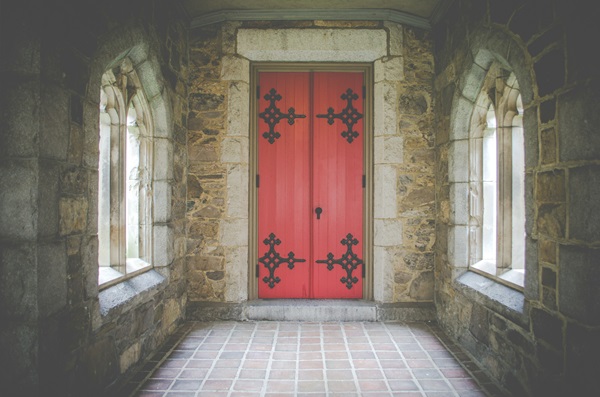
2. Number of Escape Rooms
- Starting with a single room: Starting with just one escape room allows you to be more focused on building your customer base and will naturally minimize initial costs. However, the revenue potential will also be lower, and it can be more difficult to encourage repeat customers.
- Multi-rooms: Offering multiple escape rooms will allow you to attract more (repeat) customers and larger groups. However, you’ll need to spend significantly more in upfront costs for additional space, props, and renovations.
3. Theme and Complexity
The complexity of puzzles, usage of advanced technologies, custom-built sets, and intricate mechanical automation can bloat your upfront costs. However, they can be your business’s selling point and may help you attract more players.
Remember, however, that less is sometimes more. A well-designed, simple room with engaging stories and clever puzzles can engage players while keeping your costs under control.
4. DIY vs. Professional Services
Opting for DIY (do-it-yourself) options may allow for cost savings on labor but may be more time-consuming and will require expertise.
On the other hand, hiring professionals (escape room designers, marketers, builders, etc.) can ensure a more engaging and polished final product, although it will incur higher overall costs.
Finding the right balance between cost and quality is key.
Actionable Tips and Strategies for Minimizing Costs
You’ve crafted an exciting escape room concept, and you’ve prepared a comprehensive budget taking all the expenses we’ve discussed above into account.
So, what’s next?
Before you start making your purchases and launching the business, here are some practical tips and strategies you can use to minimize costs and maximize potential ROI:
1. Negotiate
As a general rule of thumb, don’t settle for the initial rent offer.

Before settling on a location, make sure to research the rental rates in the area thoroughly. Compare prices, and be prepared to negotiate for more favorable lease terms.
Highlight your potential long-term commitment when negotiating with land owners, and propose alternative payment structures like graduated increases.
Do the same when negotiating costs for equipment rentals, permits, licenses, or insurance fees. Showcase your business plan and projected success. You’ll be surprised how a compelling story can be effective in giving you unexpected savings opportunities.
2. Creative Sourcing of Props and Materials
Be creative when sourcing equipment, props, and materials. Tap into secondhand markets, online platforms, and even thrift stores where you may be able to get unique (and affordable) props. On top of cutting costs, you may also be able to add authenticity to your escape rooms with these unique props and materials.
Also, explore the opportunity to collaborate with local artisans and crafters who can provide custom props at a lower cost (or even with bartering.) These beneficial partnerships may help you save funds.
3. Consider DIY Approaches
Encourage in-house creativity so your team can design your puzzle and mechanisms in-house. This won’t only allow you to save costs but will offer opportunities for customization and add authenticity to your escape room themes.
Explore opportunities to repurpose existing materials for new puzzle components. On top of reducing costs, this approach is also eco-friendly.
4. Leveraging Low-Cost and Free Marketing Channels
To lower your marketing costs, consider the following creative and low-cost marketing options:
- Social media marketing: Social media offers the opportunity for low-cost and even free marketing. Regularly post engaging content with engaging narratives, share behind-the-scenes posts to build anticipation, run contests, and encourage user-generated content to build a community of potential players.

- Content marketing: Start a blog, a podcast, or a YouTube/TikTok channel so you can regularly post engaging content surrounding your escape room business. For example, you can share behind-the-scenes glimpses of your creative processes in designing the room, share escape room tips, puzzle-solving strategies, and so on.
- Local partnerships: Partner with local businesses and explore cross-promotion opportunities. For example, you can offer special discounts or packages to reach wider audiences without breaking the bank.
- School, corporate, and group outreach: Offer discounted rates or educational presentations for schools, youth groups, or corporate team-building events. Not only will you introduce your escape room to new audiences, but you can also build long-term partnerships and positive word-of-mouth.
- Build social proof: Encourage players to leave online reviews and testimonials on platforms like Google, Yelp, and TripAdvisor. Positive feedback builds trust and increases visibility, drawing in even more eager explorers.
- Loyalty Programs: Reward repeat customers with exclusive discounts, special events, or early access to new themes. Loyal players become your strongest advocates, spreading the word organically and attracting new adventurers.
5. Optimize Your Operations and Booking Processes
Leverage reliable appointment scheduling tools like Bookeo to automate your booking and scheduling, saving you time and labor and minimizing booking errors. Reducing administrative workload will translate to lower overall costs.
Also, take advantage of Bookeo’s automated reminder system to minimize double bookings and no-shows. This ensures that your escape rooms operate at their optimal occupancy, maximizing revenue potential and optimizing your budget.
6. Focusing on a Niche Market
Instead of trying to please everyone, consider focusing on a niche market with specialized themes. This will allow you to be more focused on your budget and tailor your escape room experiences more precisely to attract a dedicated customer base.
By catering to a passionate niche, you may also build stronger loyalty, advocacy, and word-of-mouth marketing for your business. Passionate players within the niche are more likely to share their positive experiences with like-minded individuals, allowing your escape room to become a must-visit destination in the niche.
Conclusion
Launching an escape room business can be an exciting and highly rewarding journey, but navigating the financial aspect of the business can be tricky.
Throughout this guide, we’ve covered all you need to know about the cost of starting and running an escape room business, from startup expenses like renovating your rooms to recurring costs like marketing and promotions. We’ve also discussed actionable tips and strategies to help you optimize, lower your costs, and maximize your ROI.
Are you ready to finally start your escape room business? Bookeo can be your trusty companion as the ultimate escape room management and online booking platform: streamlining your booking/scheduling, optimizing your marketing efforts, and simplifying payments, among other benefits.
Contact Bookeo for a free demo and discover how it can help your escape room business achieve success.

